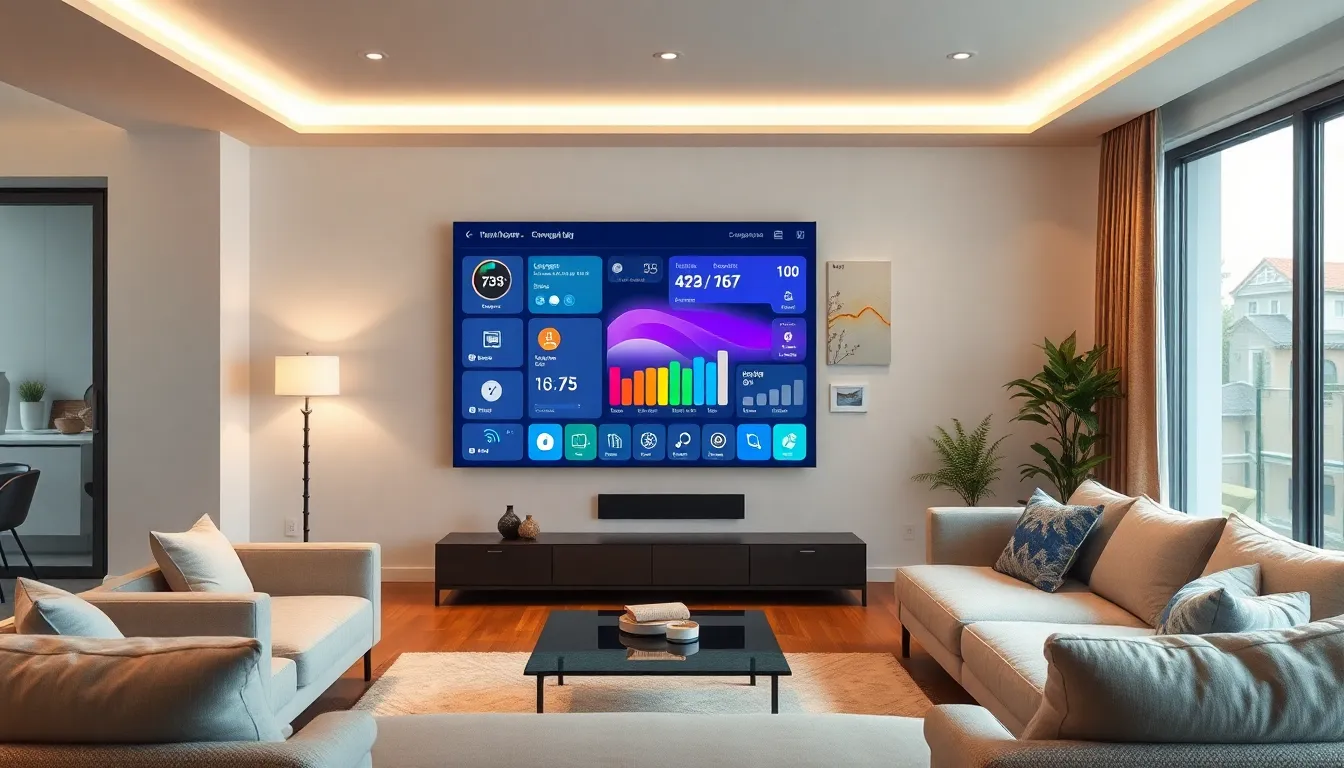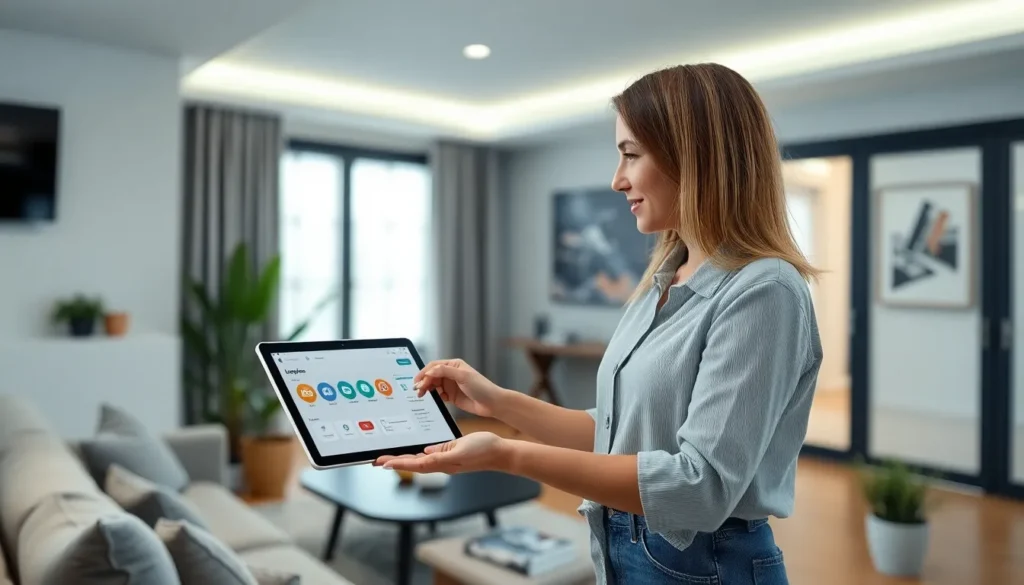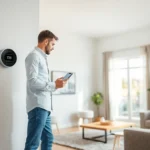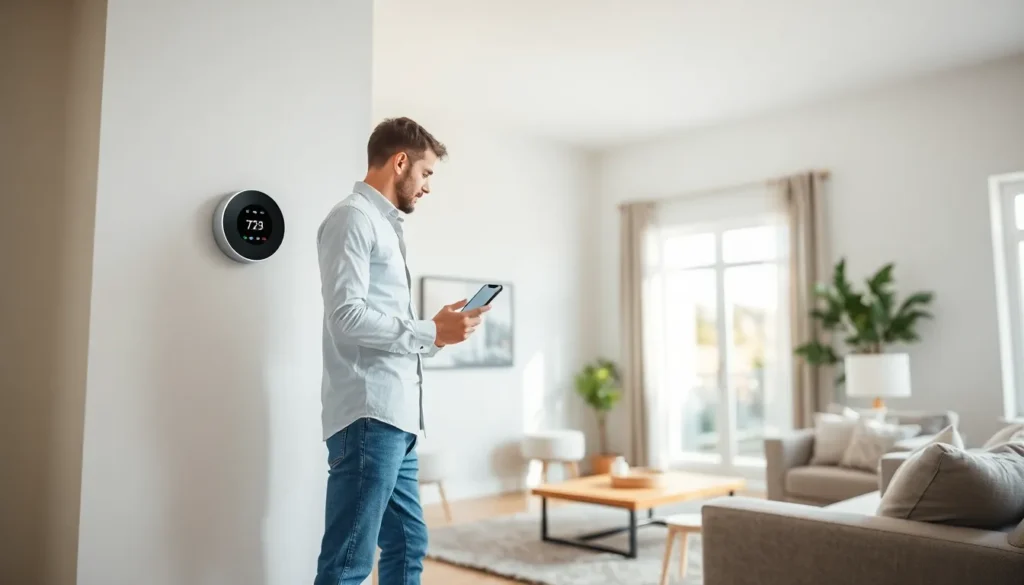Imagine walking into your home and having everything respond to your every whim, like a loyal butler who knows you better than your best friend. That’s the magic of a smart home dashboard. It’s not just a fancy gadget; it’s the command center of your digital domain, making life easier, safer, and a whole lot more fun.
From controlling lights and thermostats to managing security systems, a smart home dashboard puts the power in your hands—literally. With just a swipe or a voice command, you can turn your home into a tech-savvy haven. So why settle for a regular home when you can have a smart one that practically reads your mind? Buckle up as we explore the wonders of smart home dashboards and how they can transform your living space into a futuristic paradise.
Table of Contents
ToggleOverview of Smart Home Dashboards
Smart home dashboards serve as an integrated platform for managing home automation devices. Users interact with their smart homes through intuitive interfaces that simplify control over lighting, temperature, and security systems. This central command center enhances user experience by consolidating all smart home functionalities in one location.
Advanced features include real-time monitoring and notifications. Homeowners receive alerts about security breaches or energy usage, promoting peace of mind and efficiency. Customizable settings enable users to create personalized environments that cater to their preferences, from adjusting the thermostat to setting mood lighting.
Compatibility across various devices adds to the appeal of smart home dashboards. Many systems support integration with third-party applications and devices, enhancing versatility. A user might control smart speakers, thermostats, and cameras from a single interface, streamlining daily interactions.
Mobile access constitutes another significant advantage. Users can manage home systems remotely using smartphones or tablets, ensuring convenient adjustments while away from home. This flexibility allows for timely responses to unexpected situations, reinforcing security and enabling energy conservation.
Data analytics play a critical role in optimizing home environments. By analyzing user preferences and habits, smart home dashboards can recommend adjustments for efficiency and comfort. Historical data trends assist homeowners in making informed decisions regarding energy usage and security enhancements.
Overall, smart home dashboards represent a transformative advancement in home automation, combining convenience and control for an enhanced living experience. Through the integration of various devices and user-friendly interfaces, these systems define modern smart living.
Key Features of Smart Home Dashboards

Smart home dashboards offer several features that enhance user interaction and streamline home management. These functionalities contribute to an efficient living environment.
User Interface and Experience
An intuitive user interface greatly simplifies navigation. Users can manage multiple devices from a single screen, promoting seamless control. Touchscreen capabilities or mobile app accessibility allow for quick adjustments with just a swipe. Visual layouts often include icons and graphics, making functioning clear at a glance. Additionally, voice command features enable hands-free operation, enhancing accessibility for all users.
Device Compatibility
Device compatibility stands as a crucial feature of smart home dashboards. Many platforms support a wide range of manufacturers, including lighting systems, thermostats, and security cameras. This broad compatibility ensures users can integrate existing devices without significant investment. Protocol flexibility often includes Wi-Fi, Zigbee, and Z-Wave, providing connections to various gadgets. As a result, homeowners experience a cohesive smart home ecosystem, allowing different devices to work in harmony.
Customization Options
Customization options empower users to tailor their dashboards according to personal preferences. Many platforms allow users to rearrange widgets or create shortcuts for frequently used functions. Users might also set up automated routines, which trigger specific actions based on time or circumstances. Personalized themes, colors, and layouts add to the unique feel of the interface. Consequently, customized settings promote user satisfaction by catering to individual needs and lifestyles.
Benefits of Using a Smart Home Dashboard
Smart home dashboards offer numerous advantages that significantly enhance daily living. These benefits span across device control, energy management, and security improvements.
Enhanced Control Over Devices
Greater control over smart devices is one of the primary benefits. Users manage lighting, thermostats, and entertainment systems from a single interface. Intuitive interfaces allow swift adjustments, ensuring convenience in everyday tasks. Voice commands add another layer of simplicity, enabling hands-free operation. Customized shortcuts let users prioritize functions, making interaction even smoother. Integrating multiple devices into one platform reduces the complexity of home automation.
Energy Management
Energy management features play a crucial role in smart home dashboards. Users track energy consumption in real time, gaining vital insights into usage patterns. This monitoring helps identify areas where savings can occur. Automation options enable lights and appliances to function only when needed, leading to reduced energy bills. Additionally, scheduling devices to operate during off-peak hours optimizes electricity costs. These strategies contribute to a more efficient home environment, promoting sustainability.
Improved Security
Enhanced security measures are another significant benefit of smart home dashboards. Homeowners receive instant alerts about possible security breaches, including unauthorized access or unusual motion detection. Cameras and sensors can be monitored remotely, providing peace of mind when away from home. Customizable security settings allow users to adjust notifications and surveillance routines based on personal preferences. User-friendly interfaces make monitoring and responding to security events straightforward. These features collectively foster a safer living space.
Popular Smart Home Dashboard Solutions
Several smart home dashboard solutions dominate the market, providing users with control over their home environments. Each option offers unique features tailored to different user needs.
Solution 1: Overview and Features
Samsung SmartThings stands out as a versatile dashboard solution. This platform supports a wide range of devices, making it compatible with various manufacturers. Users appreciate the intuitive interface that simplifies device management. Real-time alerts ensure homeowners stay informed about security issues or energy consumption. Customization options allow individuals to create automated routines effortlessly, enhancing daily convenience. SmartThings also boasts robust automation capabilities, enabling users to set triggers based on time or device status.
Solution 2: Overview and Features
Amazon Alexa integrates seamlessly with numerous smart devices, providing a powerful dashboard solution. The voice-command feature facilitates hands-free control, allowing users to adjust lighting and temperature with ease. This platform excels at routine scheduling, optimizing energy use throughout the day. Users enjoy personalized control over entertainment systems and can create customized scenes for different activities. Additionally, Alexa’s compatibility with thousands of smart products ensures a cohesive ecosystem, catering to diverse user preferences effectively.
Embracing a smart home dashboard can significantly elevate the quality of everyday living. By centralizing control over various home systems it offers unmatched convenience and security. Users are empowered to create personalized environments while enjoying the benefits of real-time monitoring and energy management.
With options like Samsung SmartThings and Amazon Alexa available, there’s a solution for every preference. These platforms not only simplify interactions but also foster a cohesive smart home ecosystem.
As technology continues to evolve the potential for smart home dashboards will only grow. Investing in such technology means stepping into a future where home management is seamless and intuitive.













